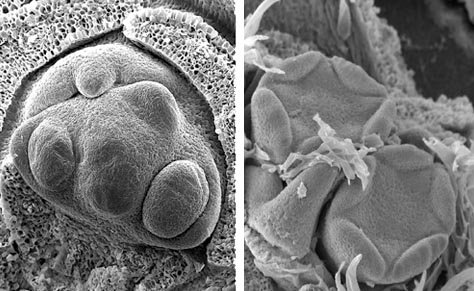Project Description
Crop Management
Featured stories about crop management appear in this issue.
Who's the customer?
New technology will link apple growers with apple consumers, Yakima, Washington, orchardist Dave Allan believes. He envisions a future in which consumers will use their
Enough bees
Tree fruit growers in the Pacific Northwest can expect an adequate supply of bees for pollination in 2007, says a commercial beekeeper. "I doubt there
Pollination tips
To improve bee pollination during bloom, tree fruit growers should focus on colony strength, number of colonies per acre, colony placement, and timing of colony
Protecting bees from pesticides
As researchers are learning that some of the new, reduced-risk pesticides are not always friendly to natural enemies important in integrated pest management, the same
Bee power
Michigan researchers, following two years of study, continue to be encouraged by the potential of a new bee for tree fruit pollination. The hornfaced bee
Reducing stone fruit thinning costs
Stone fruit growers and researchers are experimenting with a variety of chemical thinning and mechanical practices that could reduce the cost of hand thinning, a
In search of new thinners
A combination of fish oil and lime sulfur is the clear winner in more than 200 apple thinning trials conducted over the past eight seasons
ARE large Galas worth the effort?
Growing large Galas, especially in the eastern United States, is challenging, though it can be done by combining aggressive pruning, thinning, high fertilization, and irrigation.
Focus on the consumer
Between 2002 and 2005, wine consumption in the United States increased by 6 percent each year, but most of the additional wine being drunk came
Focus on enhancing revenue
Suppose your operating income is $80,000 and your expenses are $100,000. Your banker says you have to reduce your costs by 20 percent. What do
Relationships are key in marketing
Marketing of fresh produce today revolves around relationships and philosophy rather than price, says Don Goodwin, a former produce division manager for Target Corporation. "Most
Speeding up breeding
Genetic markers are speeding up the process of fruit breeding and making breeding programs more efficient, says Washington State University's apple breeder Dr. Bruce Barritt.
Not all issues solved for club varieties
It is hoped MN 1914, the still unnamed variety released last year by the University of Minnesota, will be profitable Managed varieties are becoming more
Wine grape acreage less than thought
Recent vineyard acreage and winery surveys show that Washington has 31,000 acres of wine grapes—less than what industry analysts expected. The first-ever winery survey found
Building consumer awareness
Washington State's wine industry is poised to take advantage of America's growing taste for premium wines and share in the $20 billion U.S. wine market.
Is a vineyard a good investment?
A new Washington State University economic analysis of planting Concord or wine grapes, shows that juice grapes may not be a wise investment right now,
Unwanted weeds
Dave Santos looks at next year's fruiting buds on an organic Coral Champagne cherry tree. Because synthetic growth regulators can't be used in organic cherries,
Time for Change
Jim Hazen's column in the December 2006, issue of Good Fruit Grower set the tone for the Washington State Horticultural Association's December 2006 meetings. The
Good to Know
We all know that climate and weather play a critical role in the economic success or failure of commercial fruit production. However, weather changes in
The causes and cures of doubling
A scanning electron microscopy photo taken on July 31, 2006, shows that Bing (left) was further advanced than the Chelan variety (right). Cherry or pistil
Small trees, big fruit
Thinning will be important in highly efficient cherry systems like this Washington State University orchard that has angled fruiting walls comprised of vertical fruiting uprights.











